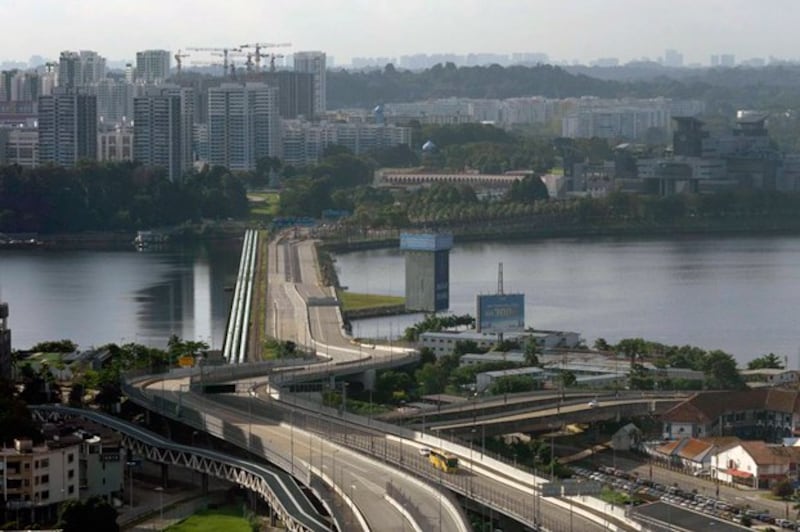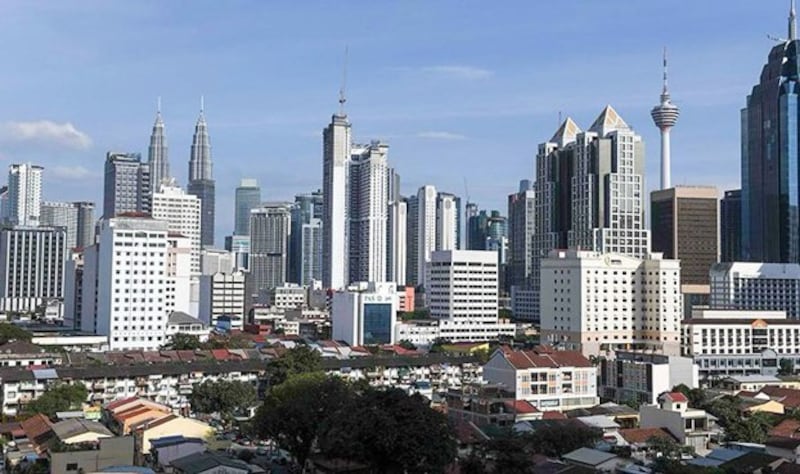High-end properties in Malaysian cities are attracting buyers from China as they move here for educational opportunities and to expand businesses, particularly in industries tied to efforts to establish a semiconductor hub in Southeast Asia, analysts said.
Post-pandemic sales have shown an influx in demand, causing property prices to surge by 15% since last year, according to the owner of a property firm in Penang, home to major global semiconductor factories. Other hot spots in Peninsular Malaysia are Johor Baru and Kuala Lumpur.
There has been an uptick in interest since early 2023, with roadshows and projects targeting international markets, said Tan Kian Aun, president of the Malaysian Institute of Estate Agents, or MIEA.
“In 2022, Chinese buyers were still reluctant, but since last year, we are seeing renewed interest,” he told BenarNews.
Earlier this year, local media reported that 24,765 Chinese nationals had participated in the Malaysia My Second Home program. It allows foreigners to get long-term visas to live in the country.
Penang is particularly attractive to Chinese buyers because of cultural amenities and because 40% of its population comprises ethnic Chinese Malaysians. The island has seen renewed interest in factories related to the manufacturing of batteries for electric cars, with Chinese businesses either renting or building new commercial properties, Tan said.

The 15% rise in property prices in upscale areas has been caused by increasing demand from students and businesses, according to Long Soo Keat, principal owner of Shijie Property, a Penang firm.
“We noticed this trend since last June, especially with students and businesses seeking to stay on the island,” Long told BenarNews, adding that Chinese customers prefer premium areas with modern amenities for food, entertainment, education and shopping.
“The properties cost over 1 million ringgit [US$212,200] or have rental prices starting at 4,000 ringgit [US$850] a month,” he said.
In the southern peninsular state of Johor, businesses from mainland China are keen on purchasing land for factory operations in the areas of Kulai and Pulai — mostly for microchips, said Chia Zi Jin, a Johor-based realty consultant.
He noted that favorable conditions for raw material sourcing and manufacturing were attracting Chinese investors.
“There has not been much interest yet to buy residential property in Johor but more Chinese nationals are looking to buy land, especially in the northern part of the state which is still cheaper than the southern part of the state, which is closer to Singapore,” he told BenarNews.
In July 2023, real estate analysts said they expected property values at the Forest City project in Johor to fall because Chinese developer Country Garden was facing financial woes that could disrupt resale and rental values.
However, in a Facebook post earlier this month, Johor Chief Minister Onn Hafiz Ghazi said Forest City’s Special Financial Zone was expected to be finalized in August. The zone is expected to attract financial institutions willing to invest in the project.
In May, Malaysian Prime Minister Anwar Ibrahim announced plans by his government to invest 25 billion ringgit, or US$5.3 billion, in expanding the local semiconductor industry and to train 60,000 local engineers as part of this.
Link to Singapore
In Johor Baru, the upcoming Rapid Transit System, or RTS, link with its neighbor, Singapore, is driving property demand in the Malaysian coastal city.
Chia described it as a “game changer.”
Set to open in early 2026, the RTS is expected to integrate with the Thomson-East Coast Line on Singapore's Mass Rapid Transit system, significantly reducing travel time caused by traffic congestion at the Johor Causeway, which connects the Malaysian state with the Lion City.

Chia said Singaporeans and Chinese nationals who work in Singapore were buying properties in Johor because of the currency exchange rate ranging around one Singapore dollar to about 3.5 ringgits.
“With RTS, they could go to Singapore in five minutes rather than getting stuck in a causeway jam for three hours,” he said.
Meanwhile, Kuala Lumpur, the capital city of Malaysia known for the iconic Petronas Twin Towers and Merdeka 118 — the second tallest building in the world — continues to attract Chinese investors to expand e-commerce and to open data centers, MIEA’s Tan said.
Chinese investors are also buying and renting properties in Sepang, a township 50 kilometers (31 miles) from Kuala Lumpur, largely due to the presence of Xiamen University Malaysia which offers degrees in the sciences, cybersecurity and communications, according to Tan.
One of the main reasons to study in Sepang is the cheaper cost of living compared to big cities in Beijing or Shanghai.
“The students come here because the township has modern facilities and there is a community of students here,” Tan said.
About 2,200 Chinese are among the 7,500 students from 44 countries studying at Xiamen’s first branch outside of China, according to Malaysian state news agency Bernama.
Overinvestment
Economist Yeah Kim Leng of Sunway University attributed the increasing Chinese interest to trade and investment ties between Malaysia and China. But he also warned that overinvestment by the government could lead to resource shortages and increased prices.

The Malaysian Investment Development Authority reported that Chinese investments in Malaysia had reached 11.6 billion ringgit, or US$2.5 billion, in the first nine months of 2023. This is a significant portion of the 225 billion ringgit, or US$47.8 billion, total approved investments in the country during this period.
“This favorable environment has led to an increased interest from Chinese investors in setting up their businesses in Malaysia, with property being a core part of their operations,” Yeah told BenarNews. “Real estate ownership serves as a base for their activities.”
Still, he said, adequate resources and skilled labor are essential to sustain the influx of investment without causing harm.
For instance, he said too many data centers and energy-intensive industries could cause water and energy shortages.
“We must be cautious of not overheating the market,” Yeah said. “Overinvestment could result in excessive demand and strain on resources and drive up the prices.”
BenarNews is an RFA-affiliated online news organization.
